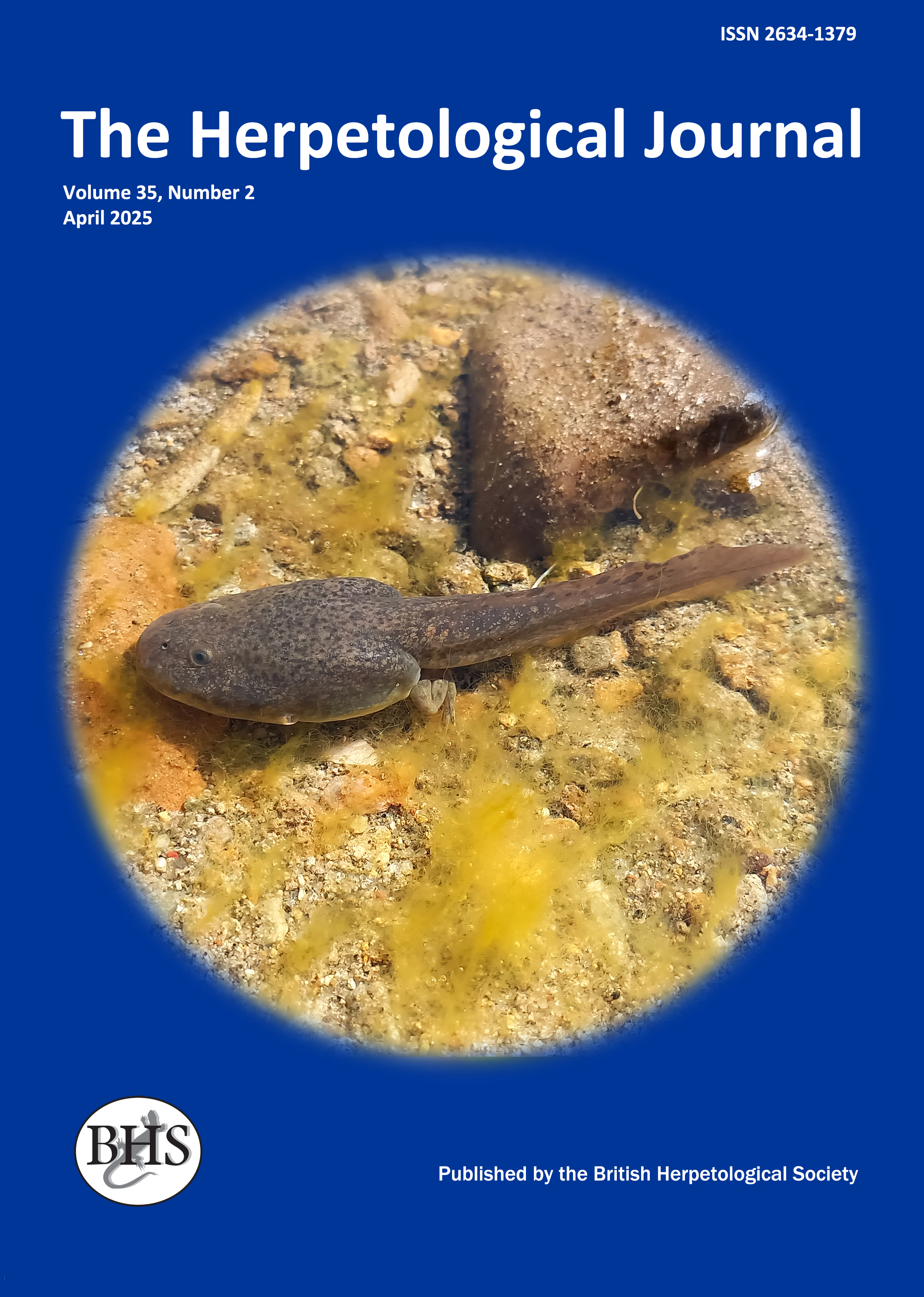
The Herpetological Journal
The Herpetological Journal is the Society's prestigious quarterly scientific journal. Articles are listed in Biological Abstracts, Current Awareness in Biological Sciences,Current Contents, Science Citation Index, and Zoological Record.
ISSN 0268-0130
2021 Impact Factor from Clarivate for the Herpetological Journal is 1.194, an increase of 0.332 from 2020.
pdf 05. Chytrid infection in Asia: How much do we know and what else do we need to know?
2377 downloads
Open Access
https://doi.org/10.33256/hj30.2.99111
pp. 99-111
Authors: Md. Mokhlesur Rahman, Mahatub Khan Badhon, Md. Salauddin, Md. Fazle Rabbe & Md. Sirajul Islam
Abstract: We conducted a systematic review to evaluate the knowledge base for amphibian chytrid Batrachochytrium dendrobatidis (Bd) infection in the continent of Asia. Despite an indication of geographic bias in terms of studying chytrid fungus distribution in Asia, 167 amphibian species (145 spp. native to Asia) from 16 countries have been reported as infected with Bd. Our meta-analysis shows that overall prevalence is 8.19 % (out of 28,433 samples), and Bd-positive rate in amphibia significantly varies among sampling sources (χ2= 380.57, DF= 6, P< 0.001) and age categories (χ2= 22.09, DF= 2, P< 0.001). We used Kernel Density analysis to produce a hotspot map for chytrid infection, and Digital Elevation Model to understand the distribution of chytrid positive locations across different elevations. In our meta-analysis, most of the Bd-positive sites range between 4.45–27.49 °C, 167–4,353 mm rainfall, 10–40°N, and at lower elevations ( Bd across Asia. Although no mass die-off events have been reported so far, Maximum Entropy modelling shows that Bd distribution and infection may potentially occur across a vast region of south-east Asia. In conclusion, we call for more systematic research and monitoring strategies in place for countries with little to no information, but have a moderately higher risk of chytrid distribution and infection.
Keywords: chytrid fungus, Batrachochytrium dendrobatidis, chytridiomycosis, emerging infectious disease, amphibian conservation, amphibian disease, Asia

